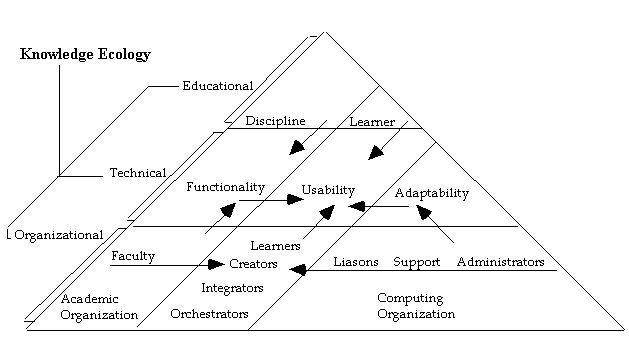|
The following projects, organizations and participants were the focus of this study:
Project: ESCAPE (HyperCard and HyperNews) Organizations: Educational Research and Information Systems (ERIS, Purdue) Participants: Hopper, Lawler, LeBold, Putnam, Rehwinkel, Tillotson, Ward Project: TODOR (BLOX) & Mechanics 2.01 (cT, Athena) Organizations: Athena and Academic Computing (AC, MIT) Participants: Bucciarelli, Daly, Jackson, Lavin, Schmidt Project: Physical Geology Tutor (AthenaMuse) Organizations: Center for Educational Computing Initiatives (CECI, MIT) Participants: Davis, Kinnicutt, Lerman, Schlusselberg Project: Context32 (Intermedia, StorySpace) Organizations: Institute for Research and Information Scholarship (IRIS, Brown) Participants: Kahn, Landow, Yankelovich [See the Switchboard for further information.] |
